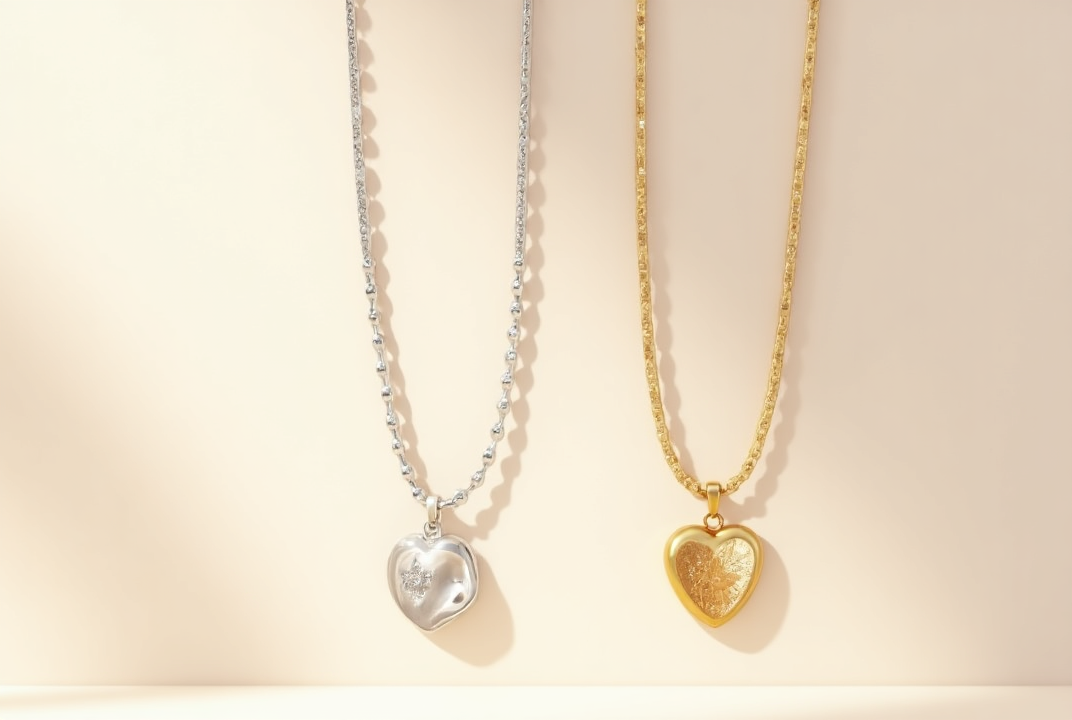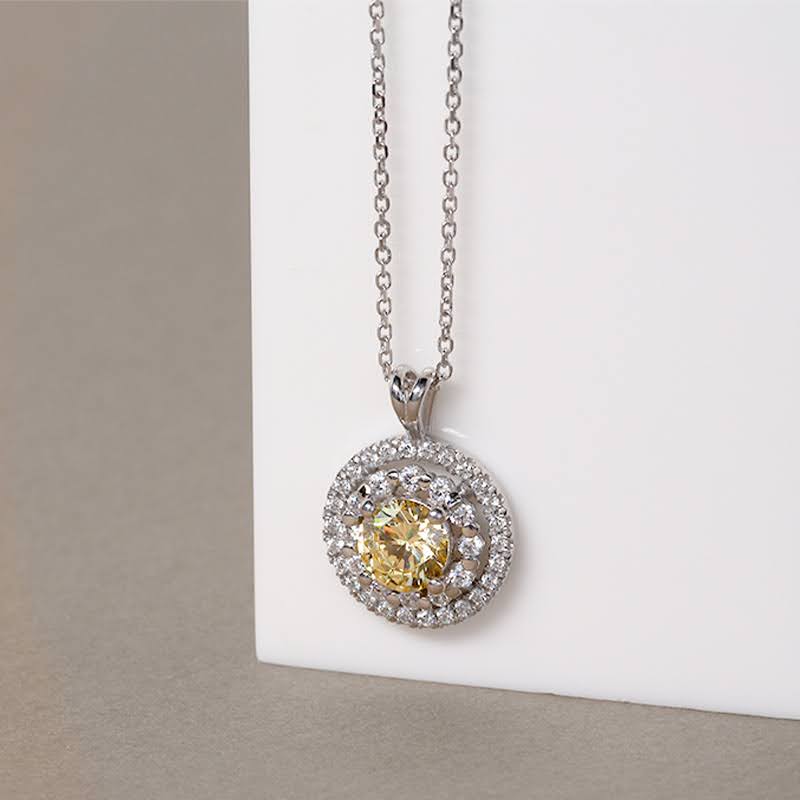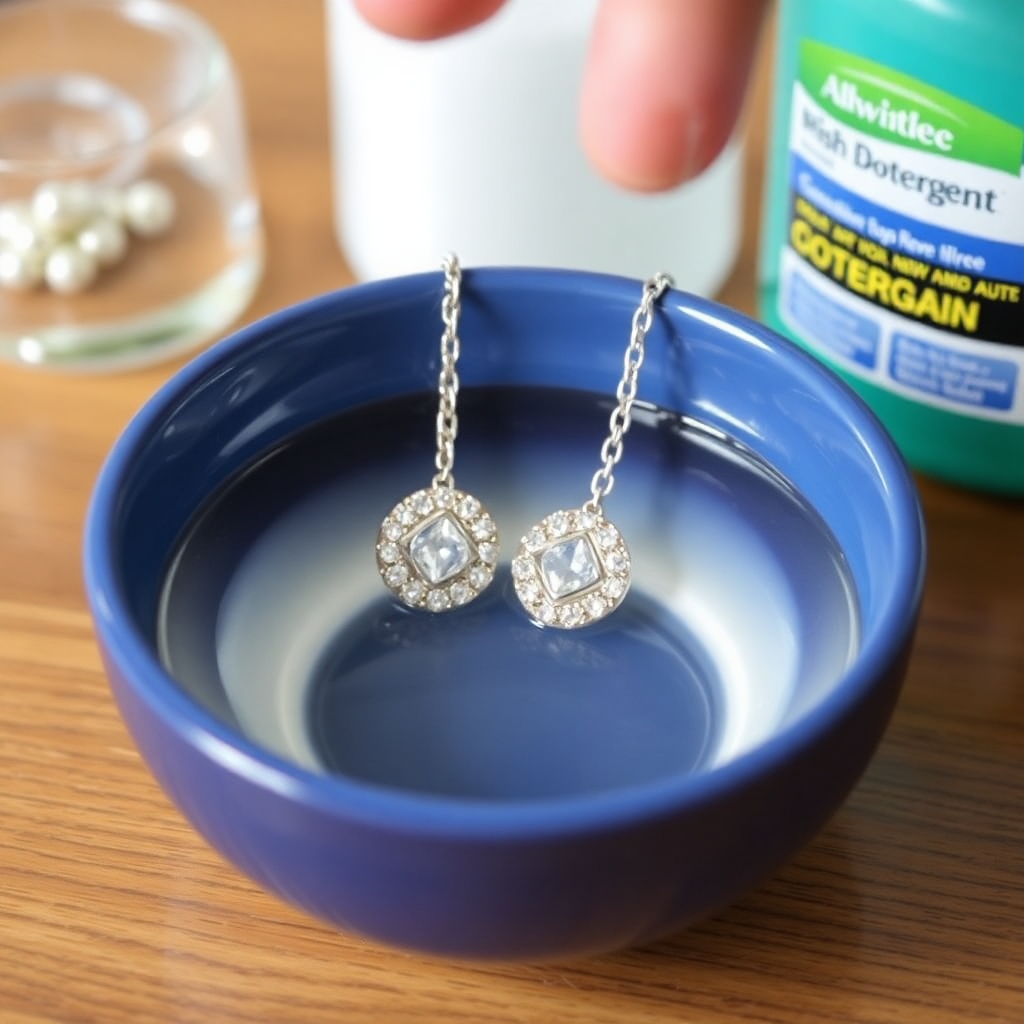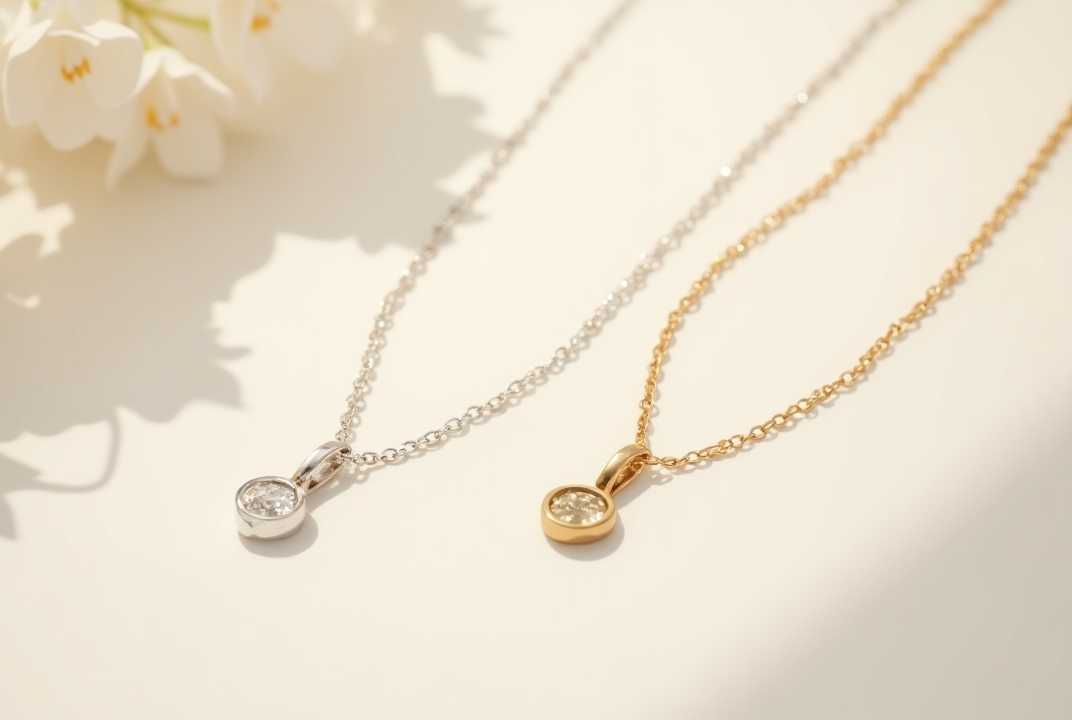Choosing the perfect luxury necklace might seem simple — until you find yourself standing at the jewelry counter, torn between the cool, modern gleam of white gold and the warm, timeless glow of yellow gold. It’s a dilemma that has puzzled jewelry lovers for generations: two stunning metals, each with its own story, style, and charm. Whether you’re treating yourself or shopping for a meaningful necklace for your girlfriend, understanding what sets these two classics apart can help you make a choice you’ll treasure for years to come. Let’s break down the beauty, benefits, and best reasons to choose white gold vs. yellow gold — so your next necklace is more than just an accessory, but a reflection of you.
Understanding White Gold vs.Yellow Gold: The Basics
Gold, in its pure form, is too soft for everyday jewelry, so it’s alloyed with other metals to enhance strength and achieve desired colors. Here’s a quick overview:
- White Gold: A sleek, silvery metal created by mixing pure gold with white metals like palladium, zinc, or nickel, often finished with rhodium plating for extra shine. It’s a modern favorite for its platinum-like look at a lower cost.
- Yellow Gold: The classic, warm-toned gold alloyed with metals like copper and zinc, retaining its iconic golden hue. It’s timeless and versatile, evoking tradition and elegance.
| Feature | Yellow Gold | White Gold |
|---|---|---|
| Color | Warm, classic yellow | Silvery-white, modern |
| Alloys | Copper, silver | Nickel, palladium, silver |
| Plating | None | Usually rhodium-plated |
Appearance: Modern Shine vs. Timeless Warmth
The most noticeable difference between white gold and yellow gold is their color, which sets the tone for your necklace’s aesthetic.
- White Gold Necklaces: These offer a bright, reflective sheen that screams modern sophistication. The rhodium plated white gold looks as a mirror-like finish, making it ideal for pairing with diamonds or gemstones that sparkle against a neutral backdrop. It complements cooler skin tones and contemporary styles.
- Yellow Gold Necklaces: With their rich, warm glow, yellow gold necklaces exude classic elegance. They enhance warmer skin tones and pair beautifully with colored type of gemstones like rubies or emeralds, adding a vibrant contrast. Yellow gold is often chosen for vintage-inspired or traditional designs.

Composition and Allergies: What’s in Your Gold?
Both white and yellow gold are alloys, but their compositions differ, affecting their look and hypoallergenic properties.
- White Gold: Typically alloyed with nickel, palladium, or zinc. Nickel can cause allergic reactions in some people, so opt for nickel-free or palladium-based white gold if you have sensitive skin. The rhodium plating adds a protective layer but doesn’t affect allergenicity.
- Yellow Gold: Mixed with copper and zinc, yellow gold is generally hypoallergenic, especially in higher karats (e.g., 18K), which contain more pure gold and fewer alloy metals. It’s a safer bet for those with metal sensitivities.
Pro Tip: Check for hypoallergenic gold jewelry labels when shopping, especially for white gold, to avoid nickel-related issues.

Durability: Which Gold Holds Up Better?
Durability is crucial for necklaces worn daily. Both white and yellow gold are durable but have unique considerations.
- White Gold: While strong, white gold’s rhodium plating can wear off over time, especially with frequent wear or exposure to chemicals (e.g., perfumes, lotions). This may dull its shine, requiring replating every 1-3 years. The base alloy is still durable for everyday use. When comparing platinum vs white gold, it’s worth noting that platinum is naturally white, so it doesn’t need rhodium plating to keep its bright, lustrous color.
- Yellow Gold: Its color is permanent, so it doesn’t fade, but gold’s softness means it can scratch or dent, especially in lower karats (e.g., 10K or 14K). Higher karats (18K) are softer but richer in color.
Verdict: Both are suitable for daily wear, but yellow gold requires less maintenance for consistent appearance, while white gold may need periodic upkeep.
Maintenance: Keeping Your Necklace Sparkling
Proper care ensures your gold necklace stays stunning for years.
- White Gold Maintenance: The rhodium plating may wear off, causing the underlying alloy (slightly yellowish) to show. Replating, done by a jeweler, restores the bright finish and costs $50-$150, depending on the piece. Regular cleaning with mild soap and water keeps it shiny between replatings.
- Yellow Gold Maintenance: No replating is needed, but yellow gold can lose luster from scratches or oils. Clean it with a soft cloth, warm water, and mild detergent. Professional polishing can remove minor scratches.
Tip: To keep your jewelry looking its best, always clean your jewelry regularly and store it in a soft pouch to prevent scratches, no matter what type of jewelry it is.

Cost: Budgeting for Your Gold Necklace
Price is a key factor when choosing between white gold and yellow gold. Several factors influence cost:
- Karat: Higher karats (e.g., 14K vs. 18K Gold ) mean more pure gold, increasing the price for both metals. For example, an 18K gold necklace is pricier than a 14K one.
- White Gold: Often slightly more expensive due to rhodium plating and the cost of white metals like palladium. Replating adds long-term costs.
- Yellow Gold: Generally more budget-friendly, as it requires no plating and uses more common alloy metals like copper.
Example Prices (2025):
- 14K white gold necklace (simple chain): $300-$800
- 14K yellow gold necklace (similar design): $250-$700
- 18K versions: Add 20-30% to the cost
Style and Suitability: Which Gold Suits You?
Your personal style, skin tone, and intended use play a big role in choosing the right gold necklace.
- White Gold: Perfect for modern, minimalist, or edgy looks. It pairs well with diamonds, sapphires, or other cool-toned gems and complements cooler skin tones (pink or blue undertones). Ideal for office wear or sleek, contemporary outfits.
- Yellow Gold: Suits classic, bohemian, or vintage vibes. It enhances warmer skin tones (yellow or peachy undertones) and pairs beautifully with warm gems like citrine or garnet. Great for statement pieces or heirloom-inspired designs.
Mix and Match: Layering your stunning diamond necklaces is a trendy way to blend both aesthetics for a versatile, personalized look.

Karat Choices: Balancing Purity and Practicality
Gold necklaces come in various karats, affecting color, durability, and cost:
- 10K: 41.7% pure gold; most durable but less vibrant. Budget-friendly.
- 14K: 58.3% pure gold; balances durability and richness. Popular for everyday necklaces.
- 18K: 75% pure gold; luxurious but softer, better for occasional wear.
White Gold: Higher karats may appear less yellow under worn rhodium plating. Yellow Gold: Higher karats deepen the golden hue, enhancing its warmth.
Is White Gold or Yellow Gold Better?
There’s no one-size-fits-all answer to whether white gold or yellow gold is better — it truly depends on your style, skin tone, and how you plan to wear your jewelry. White gold is prized for its sleek, modern look that pairs beautifully with diamonds and colored gemstones, giving it a contemporary edge that suits cool or neutral skin tones. It’s durable, but it does require occasional rhodium re-plating to maintain its bright, silvery finish.
Yellow gold, on the other hand, is timeless and classic. Its warm, rich glow looks beautiful on warm skin tones and gives necklaces and other luxury jewelry a vintage, heirloom feel that never goes out of style. It’s also low maintenance compared to white gold. In the end, neither is objectively better — the best choice is the one that complements your taste, works with your wardrobe, and makes you feel your best whenever you wear it.
Final Thoughts
Whether you lean toward the sleek shine of a white gold necklace or the warm glow of a yellow gold necklace, both metals offer timeless beauty and versatility. Consider your style, skin tone, budget, and maintenance preferences when deciding. For a modern edge, white gold’s platinum-like allure is unbeatable, while yellow gold’s classic warmth suits traditionalists and trendsetters alike. Whichever you choose, a diamond tennis necklace or a custom necklace is a lasting investment in style and sentiment.
Ready to shop? Visit trusted jewelers like luxyverse or online retailers specialising in jewelry to explore designs that match your vibe.






Leave a Comment